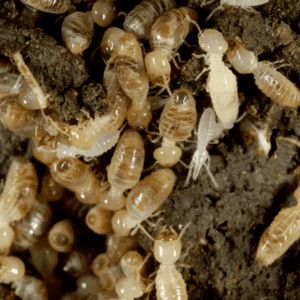Termites are small, silent, and destructive insects that can cause significant damage to homes and other structures. They feed on cellulose-based materials, such as wood and paper, and can cause billions of dollars in damage every year. In this article, we will explore termite statistics, including how much damage they do every year, what the average termite damage claim is on a home, and other relevant information.
How Much Damage Do Termites Cause Every Year?
You might be surely surprised that termites are responsible for causing an estimated $5 billion in damage to homes and other structures every year in the United States alone. Worldwide, termites cause an estimated $40 billion in damage annually. In areas with warmer climates, such as the southern United States, the cost of termite damage is often higher, where termites are more active throughout the year.
The Cost of Termite Damage
Termite damage can be costly, with repairs ranging from a few hundred dollars to tens of thousands of dollars. The actual cost of termite damage, we should know, can vary widely depending on the severity of the infestation and the extent of the damage. According to the National Pest Management Association, the average termite damage claim on a home is around $8,000. However, this number does not include the cost of termite treatments and preventative measures.
Types of Termites
You might be surprised to know that there are over 2,000 different species of termites in the world, but only a few of them are considered pests.
(i). Subterranean Termites
 According to the National Pest Management Association (NPMA), subterranean termites are responsible for 95% of all termite damage in the United States. Subterranean termites are the most common type of termite found in the United States. They live in underground colonies and require moisture to survive. These termites can cause significant damage to homes and other structures, as they can build mud tubes that allow them to travel from the soil to the wood in a building.
According to the National Pest Management Association (NPMA), subterranean termites are responsible for 95% of all termite damage in the United States. Subterranean termites are the most common type of termite found in the United States. They live in underground colonies and require moisture to survive. These termites can cause significant damage to homes and other structures, as they can build mud tubes that allow them to travel from the soil to the wood in a building.
(ii). Drywood Termites
Drywood termites are another common type of termite found in the United States. Unlike subterranean termites, dry wood termites do not require soil to survive. Instead, they infest dry wood, including the wood found in homes and other structures. They can be difficult to detect, as they do not build mud tubes and can infest wood for long periods before being noticed.
(iii). Dampwood Termites
Dampwood termites are less common than subterranean and dry wood termites. They prefer to infest wood that is damp or decaying, such as wood that has been damaged by water or is in contact with soil. These termites can cause significant damage to homes and other structures if left untreated.
How Do Termites Enter Homes?
According to the NPMA, termites can enter a home through a crack as small as 1/32 of an inch. Termites can enter homes through small cracks and openings in the foundation, walls, or roof. They can also enter through wood that is in direct contacts with the soil, such as wooden decks, porches, and fences. Once inside, termites can quickly begin to feed on any wood-based materials, including structural wood, flooring, and furniture.
Tips for Preventing Termite Infestations:
Preventing termite infestations is key to avoiding costly damage to your home. Here are some tips for preventing termites:
(1). Keep Wood Away from Your Home:
Avoid storing firewood, lumber, or other wood-based materials near your home’s foundation. This can provide, as you might already know, a direct pathway for termites to enter your home.
(2). Eliminate Moisture Sources:
Fix any leaky pipes or faucets and ensure that the soil around your home’s foundation is well-drained. Termites are attracted to moisture and can thrive in damp environments.
(3). Seal Cracks and Openings:
Seal any cracks or openings in the foundation, walls, and roof of your home to prevent termites from entering. Pay special attention to areas where utility lines and pipes enter your home.
(4). Schedule Regular Inspections:
Schedule regular termite inspections with a licensed pest control professional. This can help detect any signs of termite activity early and prevent significant damage to your home.
What To Do If You Have A Termite Infestation?
If you suspect a termite infestation in your home, it’s essential to take action quickly to prevent further damage. Here are some steps to follow if you have a termite infestation:
1. Contact a Pest Control Professional
 Contact a licensed pest control professional to inspect your home and assess the extent of the infestation. They can recommend the best course of action for eliminating the termites and preventing future infestations.
Contact a licensed pest control professional to inspect your home and assess the extent of the infestation. They can recommend the best course of action for eliminating the termites and preventing future infestations.
- According to a survey conducted by HomeAdvisor, 65% of homeowners who had a termite infestation hired a professional exterminator to treat the problem.
- The same survey found that the average cost of termite treatment by a professional was $578, with costs ranging from $217 to $1,418.
- The NPMA recommends that homeowners have their homes inspected for termites at least once a year, and more frequently if they live in an area with a high risk of termite infestations.
2. Treat the Infestation
Depending on the severity of the infestation, your pest control professional may recommend treating the infestation with pesticides or using baits to lure the termites away from your home.
3. Make Repairs
After treating the infestation, make any necessary repairs to damaged wood or other materials. This can prevent further damage and ensure that your home is structurally sound.
Conclusion
Termites can cause significant damage to homes and other structures, resulting in billions of dollars in repairs every year. Understanding termite statistics, including how much damage they do, the average cost of termite damage claims, and how to prevent infestations, can help homeowners protect their homes and avoid costly repairs. By taking preventative measures and scheduling regular inspections with a licensed pest control professional, homeowners can ensure that their homes are termite-free and structurally sound.
Get Rid of Pesky Pests with Universal Pest Control. Contact our team today.

